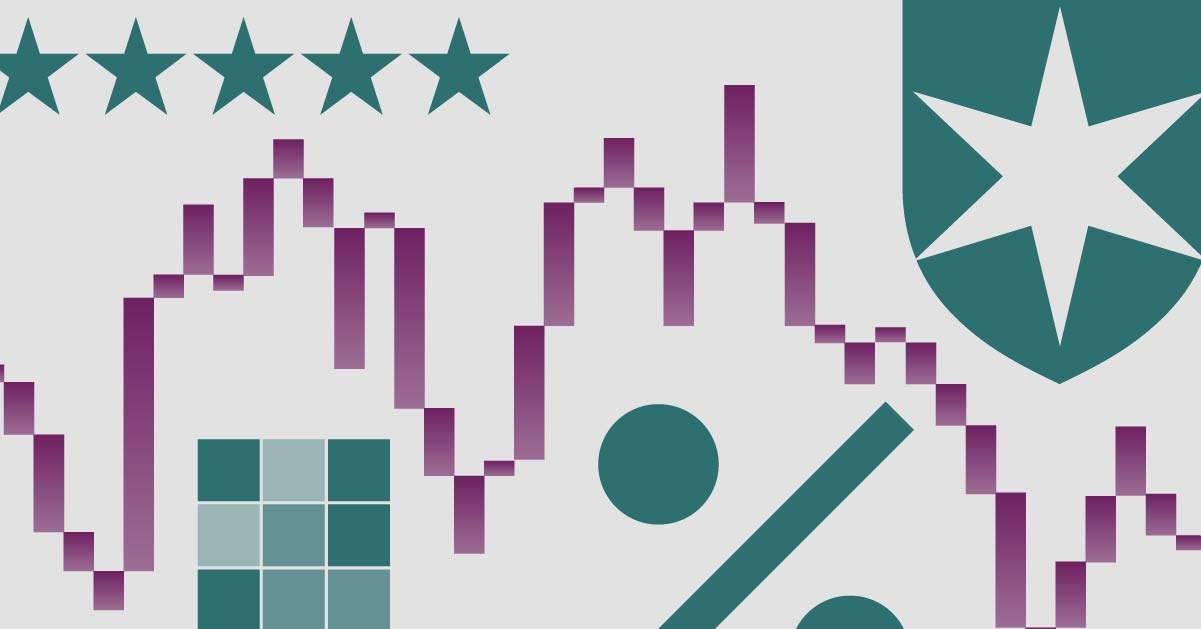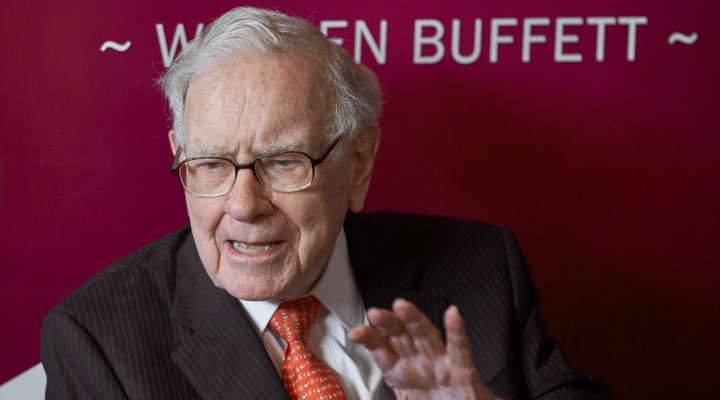
Last year proved quite a comeback for the 3-star silver-medallist $10.5 billion Fidelity Global Innovators F, a global equity fund that has seen its share of ups and downs since its 2018 launch. The fund returned 46.69%, versus 16.19% for the Global Equity category. In 2022, the fund languished, as it returned -29.65%, versus -14.08% for the category.
Mark Schmehl, a portfolio manager with Fidelity Investments ULC who is based in San Francisco and oversees $28 billion in total across three funds, attributes the turnaround not to one factor but a host of them. “There are a lot of reasons why the market bounced last year. One is that in 2022, it got over-sold and a lot of stuff got really cheap. For instance, Facebook [Meta Platforms Inc., or META] was trading at 10 times earnings,” recalls Schmehl, “A lot of growth stocks got demolished in 2022. Some of it was fair, but you kind of threw the baby out with the bath water. Lower-quality names got hammered, but so did the good-quality names. Some of what you saw last year was a bounce-back from over-sold conditions and growth. The rest of the market did not move as much. And the Nasdaq Index was down about 33% in 2022.”
AI’s Been a Phoenix for Tech Bets
Schmehl argues that Artificial Intelligence (AI) names caught fire in February and maintains that’s what ignited last year’s recovery. “I don’t know if I got lucky, but I went to this conference in San Francisco, just an ad hoc thing in an area called Hayes Valley,” says Schmehl, a 30-year industry veteran who joined Fidelity in 1999, after earning a Bachelor of Business Administration at Wilfrid Laurier University and an MBA at Columbia University. “The place was an absolute zoo with people sitting on the floor and there were lines out of the door. Like a rock concert. All the who’s who in AI spoke—they are now famous billionaires—and I had one of these moments when I thought ‘Omigod, I have to buy all this.’ I loaded up on Nvidia Inc. (NVDA), Advanced Micro Devices Inc. (AMD) and anything else that was AI-related. It was a great trade and that carried my fund, and much of the Nasdaq to be honest, right through the end of the year. The AI theme is so prevalent and powerful. It’s great trade, and it continues,” says Schmehl, adding that the strong performance was aided by the fact that the much-predicted recession did not materialize.
On a shorter-term basis, the poor showing in 2022 did affect the three-year performance figure. Fidelity Global Innovators Class F returned an annualized 1.96% (as of Feb. 16), versus 5.15% for the Global Equity category. But on a five-year basis, the fund outperformed and returned an annualized 23.58% versus 8.53% for the category.
Earnings Can Beat Valuations
Given that technology stocks, especially the so-called Magnificent Seven, such as Alphabet Inc. (GOOG) and Microsoft Inc. (MSFT) have had a strong run, many market pundits argue that they are over-valued. But Schmehl disagrees. “I don’t really care about valuation. I don’t think it matters,” he says, referring to similar comments he made in a Dec. 2020 Manager Insight profile. “Stocks respond to fundamental strength, more than valuation. Valuation is a metric. But if you look at the earnings power of some of these stocks, they are really powerful. Nvidia, for instance, up until two weeks ago, was one of the cheapest tech stocks you could find. But its earnings are exploding. So are Microsoft’s. But some aren’t exploding. Apple Inc. is one example.”
Making a decision based on valuation, argues Schmehl, is wrong-headed. “You don’t know what you’re doing. For me, it’s the least important piece of information. That’s my style.”
Taking Nvidia as an example, Schmehl notes that it trades at US$715.65, or about 36 times forward earnings. “I think that estimates for Nvidia are too low. The cycle is going to be longer than people expect. So, I think it will keep going up. Whether it’s expensive, or not, doesn’t really matter,” argues Schmehl. “They sell everything that allows people to do AI computing. It’s the most important thing in technology today. Nvidia has a virtual monopoly on AI; there is so much demand they can probably sell into for years. It’s analogous to the Internet build-out we had in the late 1990s when guys like Cisco (CSCO) and Nortel had virtually infinite demand for five years. Eventually, it did get very bubble-y. But AI is very early in the cycle and I don’t think we can say it’s a bubble. Nvidia’s earnings are unbelievable. Demand is off the charts and we have investments in all these private AI server companies and they can’t get power, or GPUs [graphics processing units], or memory. If you wanted to buy a GPU from Nvidia, you can wait two years.”
Largely a bottom-up stock picker, Schmehl is currently favouring information technology, which accounts for 42.9% of the portfolio, as of Dec. 31, 2023. That’s followed by 17.2% in communication services, 14.3% consumer discretionary and 7.6% industrials. The portfolio has about 150 names, although there are many tiny positions of about 0.1%. But the top 10 account for 48% of the fund and includes names such as Nvidia, as well as some surprises in the form of uranium producer Cameco Corp. (CCO), which reflects Schmehl’s occasional contrarian bent.
Best Opportunities are Found on the Fringes
In searching for stocks, Schmehl looks for several key attributes. Yet rather than dwell on conventional corporate characteristics such as strong balance sheets or defensible moats, Schmehl focuses on what is changing in the marketplace. “I’m looking for positive change. Some things are getting better. Most things that investors buy are good companies that have good operations and good management teams. They will be just fine. But they don’t change that much. So there is not a lot of chance of alpha generation for my style,” maintains Schmehl. “I tend to own really out-of-favour companies that have terrible balance sheets and management teams and are pretty much flat on their backs with their legs in the air. Or I tend to own companies that are doing so well and are controversial and journalists ask me ‘why do you own them, because they seem expensive.’ Those are the two areas where I focus the most. And everything else in the middle, which would normally be an investment purview, I generally don’t own. It’s weird, but it works.”
One of his representative holdings is Vertiv Holdings (VRT), a firm which makes cooling systems. “An AI data centre runs about 10 times hotter than a traditional data centre. Heat is a huge problem and the only way to solve it effectively is with something called liquid cooling. They put water right to the chip. But only one company does this well,” says Schmehl. “A bunch of companies do this, but Vertiv is the leader. We’re going to build a lot of these data centres. Vertiv was a sleepy industrial name and one of our analysts found it, and thought, ‘Omigod, this is AI.’ So I bought a ton of it. And it’s up almost 100%.”
AI Has a Long Runway
Schmehl figures there could be a three-year building period for AI facilities. “Vertiv’s earnings could triple from here. I don’t know if it will happen. But it’s always nice when you can do the math, and say, ‘Wow, its earnings will grow an awful lot.’ Those are good stocks to own.”
Vertiv is trading at US$58.45, or a trailing price-earnings ratio of 25.6 times. “I don’t look at valuation. I care more about the company’s fundamental strength and I think that the street has estimates that are too low. This company will do better than that, and go up.”
Another favourite is Cameco Corp., the uranium miner that was very much out of favour. “The stock was incredibly cheap and in late 2022 the company announced a deal to acquire a 49% interest in nuclear technologies supplier Westinghouse Electric Co. [the remaining 51% stake was bought by Brookfield Renewable Partners (BEP)], and nobody was interested,” recalls Schmehl. “A colleague and I did a lot of work on it, and we decided, ‘It’s not bad. Nuclear power has a role to play in the climate solution.’ That was our basic thesis.”
Acquired in late 2022 at around $56.85, the shares are up about 75%.
Meanwhile, Schmehl observes that many other observers have started to agree that nuclear power generation is more reliable than solar and wind energy. “If you talk to the data centre guys, they don’t want any part of solar or wind. They will say, ‘I want the power to never change and it has to be dependable.’”
Next Rally Could Go Nuclear
The main part of his thesis is that uranium supply has shrunk, and more people are saying, nuclear power is the only solution. “There is a demand for more electricity and you need to build something that is carbon-free. Nuclear is the only answer and the best place to get leverage is Cameco, since it’s the only game in town. They bought Westinghouse, which builds reactors, and they own two of the best mines on the planet. It’s a sleepy Canadian stock. There could always be a meltdown and something could go wrong. That’s investing. Barring something like that, we need more nuclear facilities and I don’t see how else to get them.”























